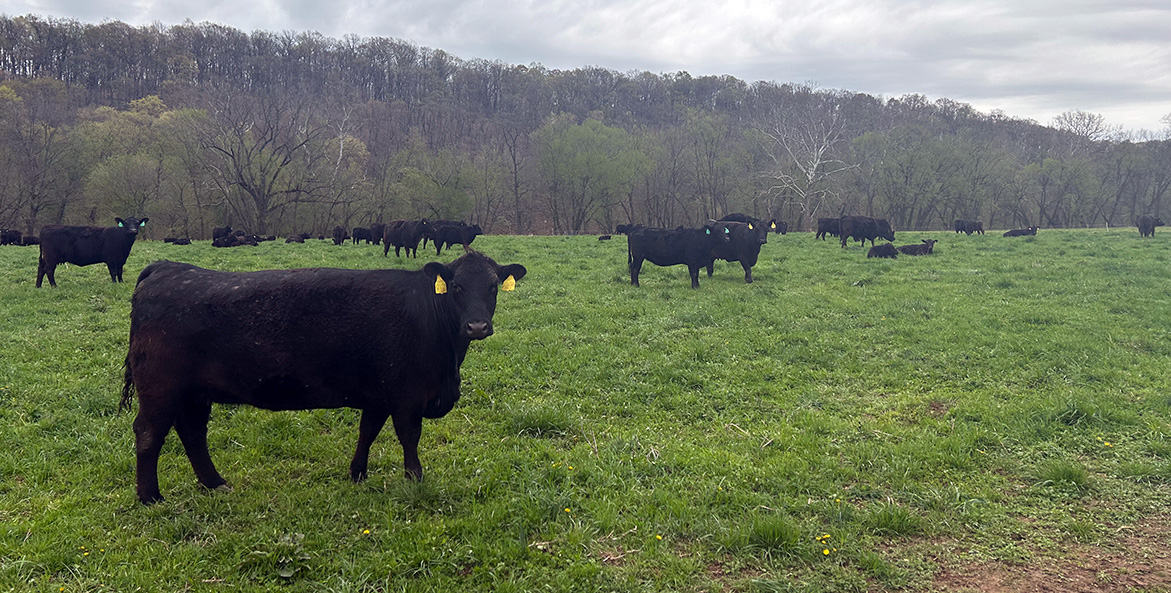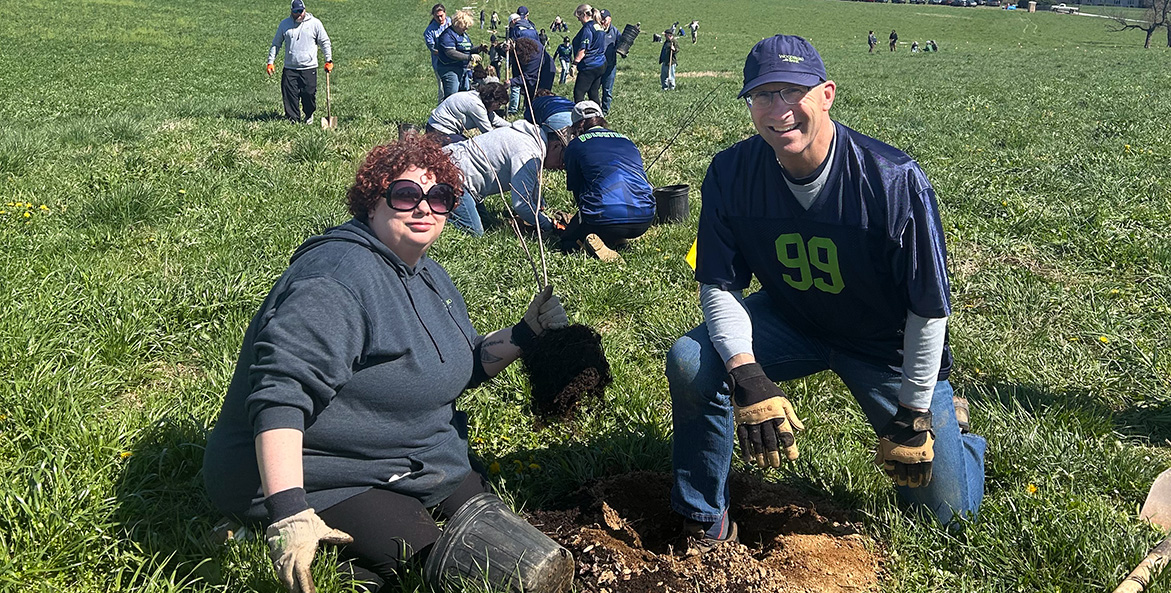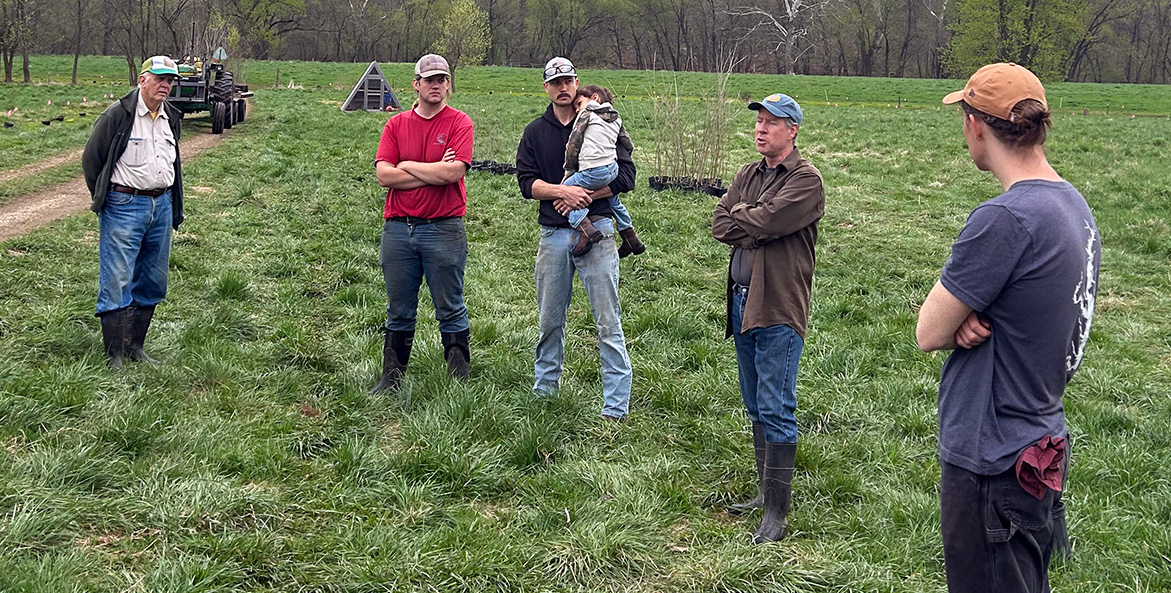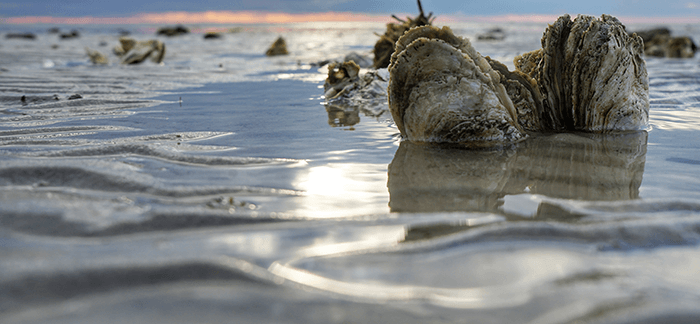Nestled in the picturesque town of Buckeystown, Maryland, Hedgeapple Farm is more than just a working farm—it's a legacy of sustainable agriculture and community-driven change. Established in 1956 by Roy Jorgensen, the farm takes its name from the Hedgeapple trees that once lined its fields as natural hedgerows. Today, it stands as a nonprofit educational foundation, producing grass-fed and finished beef from red and black Angus cattle and Akaushi Wagyu, along with non-GMO, soy-free pork. Recently, buzzing new additions—beehives—have joined the fold, set to produce local honey and support the pollination of nearby plants.
At the helm of Hedgeapple Farm is Executive Director John Jorgensen Jr., a third-generation leader, deeply rooted in both the farm’s history and its forward-thinking mission. Alongside him, Farm Manager Chris Zook brings a passion for the interconnected health of soil, animals, and humans, while Assistant Manager Seth Young specializes in regenerative farming and livestock management. Together, they lead with a shared vision: proving that farming can thrive in harmony with nature.
The farm’s roots extend back to an 18th-century land grant, and its restored 1790 log tavern tells the story of its rich heritage. Serving as a retail outlet, the tavern bridges the past and present, connecting consumers with locally sourced, sustainably raised products.
By selling directly to the public, Hedgeapple Farm fosters a deeper understanding of where food comes from and how mindful farming practices can nurture the land and its people.
Why Regenerative Agriculture?
At the heart of Hedgeapple Farm’s operations lies a commitment to regenerative agriculture—a holistic approach designed to improve soil health, enhance biodiversity, and combat climate change through carbon sequestration. By following principles like minimizing soil disturbance, maintaining ground cover, and integrating livestock with rotational grazing, Hedgeapple Farm not only reduces its environmental footprint but also creates a healthier ecosystem.

Cows on Hedgeapple Farm graze in lush pastures designed to improve soil health, provide a nutritious diet, and create a healthier ecosystem.
Rob Schnabel/CBF Staff
Walking across the farm’s lush pastures, one encounters a thriving mix of more than 30 plant species, including alfalfa and legumes rich in omega-3s. These diverse pastures provide the cattle with a nutritious diet, enhancing the quality of their meat. Rotational grazing—where cows graze in small sections for a single day before moving on—improves both animal welfare and soil health. This careful practice prevents overgrazing, allowing plants to recover and build deep root systems that stabilize soil, reduce erosion, and prevent nutrient runoff into waterways.
As the cows graze, their manure is naturally distributed, enriching the soil and reducing methane emissions. Over time, the soil becomes more fertile and capable of absorbing water—an essential benefit in the face of changing climate patterns.
For every 1 percent increase in soil organic matter, the land can hold an additional 40,000 gallons of water, bolstering resilience against droughts and floods alike.
The Role of Trees in Sustainable Farming
Trees play a vital role in the farm’s ecosystem. Silvopasture systems, where trees are integrated into grazing areas, provide shade and shelter for livestock, reducing heat stress and improving productivity. For Hedgeapple Farm’s dark-coated cattle, these shaded areas are especially important in preventing overheating and calving complications.
Along the farm’s waterways, rows of native trees act as guardians, stabilizing streambanks and filtering runoff. Agroforestry practices, which combine crops with tree plantings, further enhance biodiversity, attract pollinators, and diversify the farm’s income. Beyond these immediate benefits, trees sequester carbon and create habitats for wildlife, making farms more resilient to climate challenges.
Creating Community
Hedgeapple Farm recently became a hub of community collaboration, hosting two tree-planting events in partnership with CBF. Over the course of two days, 80 volunteers—including employees from Woodsboro Bank, Maryland’s 5 Million Trees Initiative, and CBF restoration interns Nicholas Hames and Loretta Jordan—came together to plant 1,500 native trees.

Employees from Woodsboro Bank joined 80 volunteers over two days to plant 1,500 trees at Hedgeapple Farm.
Rob Schnabel/CBF Staff
The events began with an inspiring talk from Rob Schnabel, CBF’s Maryland Restoration Scientist, who shared insights into the connection between tree planting and regenerative agriculture. Volunteers, armed with knowledge and shovels, spent four hours transforming the landscape by planting sycamores, red maples, tulip poplars, black locusts, pawpaws, serviceberries, and swamp white oaks. Protective tubes were carefully placed around the young trees to shield them from deer and rabbits, ensuring their survival and growth.
Reflecting on the experience, CBF’s Land Stewardship Coordinator Will Grinnell underscored the power of volunteer efforts: “Volunteer involvement is key to the success of our plantings and ultimately Bay restoration work at large—it allows us to educate volunteers on the issues while providing them an avenue to enact the change they wish to see in their community. Local action ultimately can create regional impact, and actions like planting trees have a myriad of benefits downstream. My interest in Bay restoration began as a volunteer, and ultimately the Bay and our communities belong to all of us, so everyone should have a chance to create positive change.”
Woodsboro Bank employees exemplified environmental stewardship, using their annual paid volunteer hours to join the effort. Guided by experienced organizers, the event showcased how collective action can lead to meaningful, lasting change.
Three Things You Can Do
Supporting sustainable agriculture and environmental restoration can start with small, meaningful actions.
- Volunteer with CBF to plant native trees during seasonal tree-planting events. These initiatives directly contribute to improving water quality, stabilizing soil, and creating habitats for wildlife. With a spade in hand and a shared mission, you’ll join others in reforesting areas that benefit the Chesapeake Bay ecosystem.
- For a hands-on experience with regenerative agriculture, spend time at CBF’s Clagett Farm tree nursery. Volunteers assist in nurturing young saplings that will eventually restore riparian buffers. While learning about sustainable farming practices like no-till agriculture and cover cropping, you’ll play an active role in fostering healthy soils and ecosystems. Seasonal volunteer opportunities will be posted on our Event Calendar.
- Additionally, make informed choices about your food by supporting local, sustainable farms through Future Harvest’s Find-a-Farmer Map. This resource connects you with nearby producers of fresh, environmentally friendly goods, from vegetables to meats. Buying local not only reduces your carbon footprint but also strengthens community ties and supports farmers dedicated to sustainable practices and recycling dollars through the local economy.
Every step you take—whether planting trees, tending saplings, or choosing local food—creates a ripple effect that benefits the environment and strengthens communities. Join these efforts today and help pave the way for a more sustainable future.



